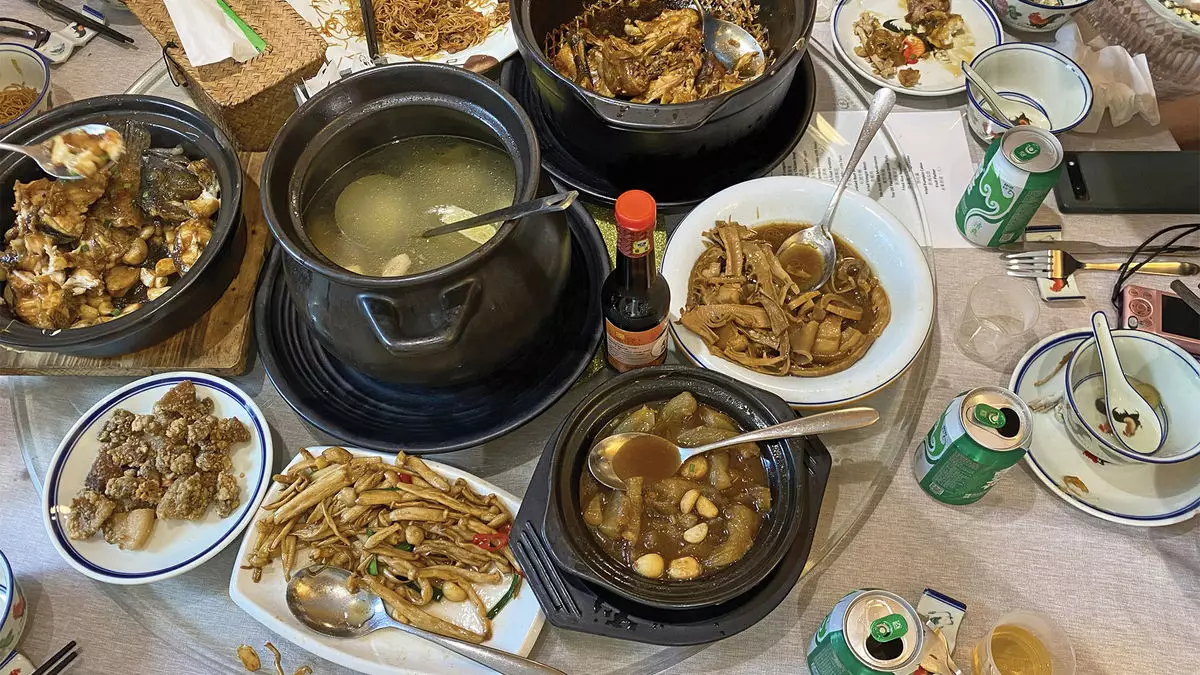Drinking tea has long been a cherished ritual for many, but few are privy to the intricate journey this beloved beverage undertakes before it graces our cups. My tea-drinking habit, spanning over 20 years, was transformed during a recent excursion off the Viking Yi Dun, a cruise line’s inaugural voyage along the scenic coasts of China. This trip not only immersed me in culture but also introduced me to the rich history and significance of Tieguanyin, a renowned oolong tea originating from the lush hills of the Fujian province.
This 10-day cruise, which carried eager travelers from Shanghai to Shenzhen, was a tapestry of cultural experiences. We were fortunate to witness a traditional Chinese tea ceremony performed aboard the ship. An adept tea master executed the ritual with a blend of grace and precision, as the melodic sounds of a guqin string performance wafted through the air. This event served not only as an entertaining performance but also as a poignant reminder of the cultural heritage wrapped around this time-honored beverage. Each movement of the tea master—the warming of cups, the careful brewing, the offer of potion to guests—revealed a deep respect for tradition and the art of tea.
Little did I know that a deeper connection with tea awaited me. Our ship made a stop at Xiamen, providing an opportunity to embark on a journey into the heart of one of China’s most famous tea-producing regions: Fujian. This experience would take me beyond simply observing tea culture to actively participating in its age-old practices.
Our group hopped onto a charter bus and traversed toward An’xi County, where the hillside began to unfurl in a rolling landscape adorned with rows upon rows of tea trees. The comparison to Italian vineyards struck me as we drove; the meticulous care that farm families extend to tea cultivation echoed the same tradition found in winemaking. Our English-speaking guide enriched our understanding of Tieguanyin tea, explaining its unique oxidation process, which ultimately shapes its flavor profile. Unlike black or green tea, oolong hovers tantalizingly between the two, showcasing diverse characteristics depending on its processing.
Upon stepping off the bus, the aromatic earthiness enveloped me, signaling that I was stepping into a world where tea was not just a drink—it was a lifestyle. We enjoyed a sumptuous family-style lunch, where the meal was complemented by the infusion of tea in the dishes, further highlighting the omnipresent role tea played in our experience.
Post-lunch, we donned bamboo hats and were led down a path to the tea fields, ready to harvest. The instructions were simple yet crucial: look for two mature leaves flanking a smaller bud. Engaging in this activity was both enriching and tactile. I was surprised by how meditative the process was—each pluck connecting me deeper to the land and its legacy. The sensation of fresh tea leaves was reminiscent of the comfort of my morning cup, a relationship now anchored with fresh understanding.
As the elements turned, with rainfall and the occasional mosquito reminding us of nature’s unpredictability, our expedition took a gentle pause. We sheltered under a gazebo, where further tea insights were shared, filling in the gaps of our newfound knowledge. Our guide emphasized the labor of love involved in tea processing, giving context to the leaves I had meticulously picked moments ago.
After our time in the fields came to an end, we learned how the harvested leaves underwent processing. The transformation from leaf to beverage involves delicate drying techniques, where leaves are lightly fried and rolled, sealing in their unique flavors. It was fascinating to witness this skill first-hand, revealing the intricacy involved in every cup of Tieguanyin.
Our journey culminated in a tea ceremony that reflected the one we had witnessed on board. Gathered around a low table in a serene tearoom, we participated in the same ceremonial tea brewing we had observed earlier. Sipping the aromatic beverage, the experience felt profound—every sip a connection across cultures and time.
As I purchased several packages of tea to share with family and friends, I reflected on how this excursion transformed not only my appreciation for tea but also my understanding of the culture that simplifies a story rooted in nature, labor, and tradition. The journey of Tieguanyin tea—from the fertile fields of Fujian to my cup—was not merely about consumption; it was a reminder to savor the stories that bind us across continents.


Leave a Reply